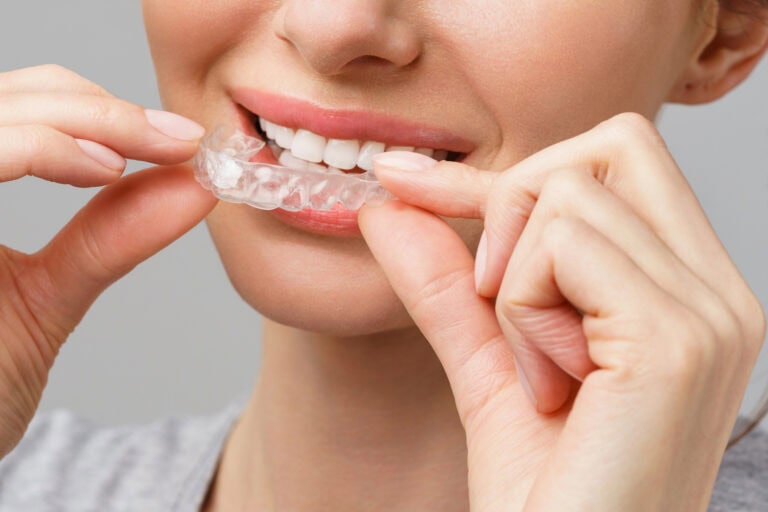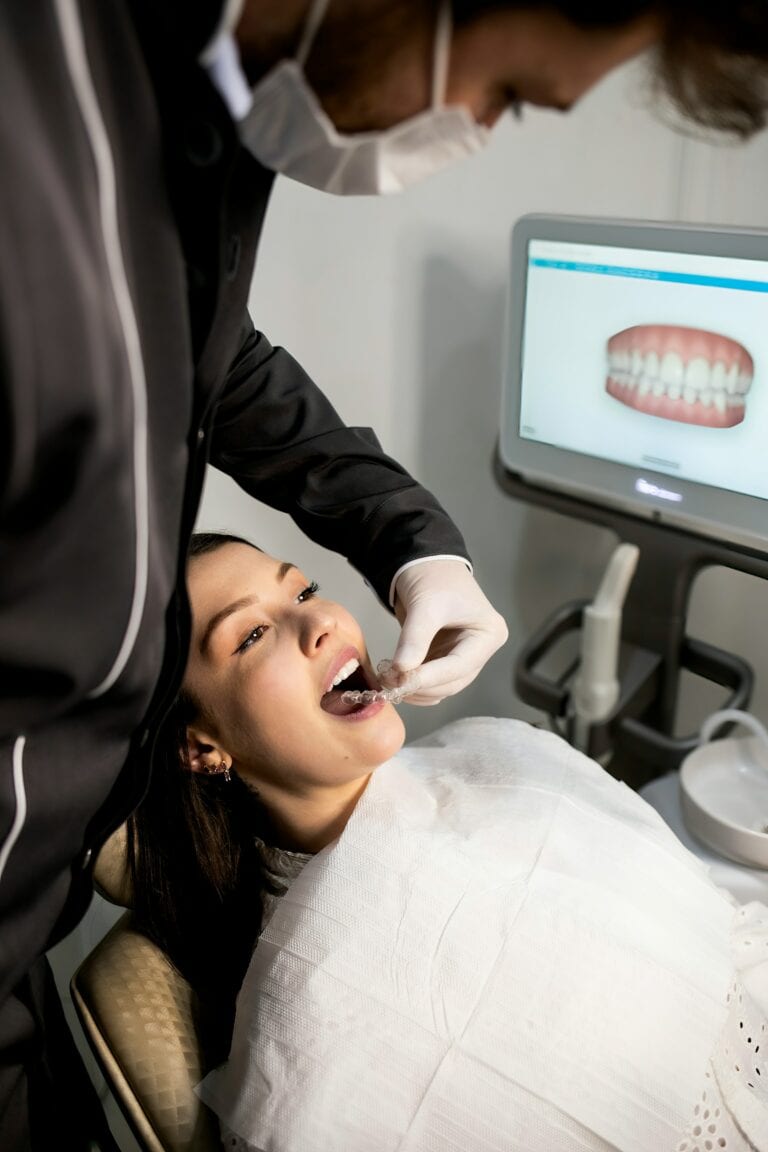What is Tooth Decalcification? 3 Ways to Prevent White Spots On Teeth From Braces
Tooth decalcification is the gradual loss of vital minerals like calcium and phosphorus from your enamel, the protective layer that keeps teeth strong. When enamel weakens, it often shows up as white spots on teeth from braces, a common concern during orthodontic treatment. If ignored, these spots can progress into more serious issues such as tooth decay.
In Colorado, where it’s common to see both teenagers and adults with braces, families often look to trusted providers for guidance. Patients want to know not only how to prevent damage but also how to restore confidence in their smile. Understanding risks early makes prevention much easier, and more effective.

What is Tooth Decalcification?
The science behind enamel loss
Your enamel is the hard, mineral-rich shell that shields teeth from daily wear. When bacteria and acids from plaque aren’t cleaned away, they strip minerals from this layer, leading to enamel decalcification. Over time, poor hygiene accelerates the process, making teeth weaker and more vulnerable.
Signs and early symptoms
Early warning signs often include white spots on teeth near the gumline or around braces. These areas may feel rough or chalky to the touch. As the condition advances, teeth can become more sensitive, discolored, and prone to long-term damage if untreated.
Causes of White Spots on Teeth from Braces
Wearing dental braces makes it harder to reach every surface of your teeth. Plaque can easily build up around brackets and wires, slowly weakening enamel. Both teens and adults with braces may find brushing and flossing more challenging, increasing the risk of decalcification.
Diet and lifestyle
Sugary or acidic foods, sodas, citrus fruits, and sports drinks fuel bacteria that attack enamel. In Colorado, where active lifestyles often include energy drinks, the risk of white spots on teeth can increase if these habits aren’t balanced with proper care.
Hygiene and missed checkups
When daily cleaning is inconsistent, plaque and bacteria remain on the teeth much longer. Over time, this creates an acidic environment that steadily weakens enamel and leads to white spots. Missed dental or orthodontic visits make matters worse, since early changes in enamel can go unnoticed until they become permanent.

3 Ways to Prevent Tooth Decalcification
Practice excellent oral hygiene
Consistent oral care is your best defense against enamel decalcification. Brush twice daily with fluoride toothpaste, floss carefully, and rinse after meals. Tools like floss threaders, interdental brushes, and water flossers help clean around brackets and wires where plaque likes to hide, keeping your smile stronger.
Watch your diet
Sugary snacks, citrus fruits, and sodas create an acidic environment that erodes enamel. Limiting these foods can protect your teeth. In Colorado’s dry climate, drinking more water is especially important, it helps prevent dry mouth and naturally rinses away bacteria that cause white spots on teeth.
Regular orthodontic and dental care
Don’t skip checkups. Professional cleanings and orthodontist visits help detect early signs of decalcification treatment needs. Ask about fluoride varnishes, specialty rinses, or other preventive care plans. With guidance tailored to your needs, you can maintain healthy teeth and avoid lasting damage.
Decalcification Treatment Options
While white spots on teeth are often permanent, there are effective ways to improve their appearance. Decalcification treatment typically focuses on cosmetic and strengthening options, such as:
- Fluoride varnish or remineralization pastes to rebuild enamel strength.
- Professional whitening to blend color, though it’s best to avoid DIY methods during treatment.
- Microabrasion or veneers for severe cases where enamel is deeply affected.
These treatments can enhance your smile, but prevention remains key. Once enamel is weakened, solutions are corrective, not restorative, making proactive care the most powerful tool against lasting damage.
How Your Orthodontist Can Help
In Colorado, patients benefit from trusted providers like Longmont Braces and other skilled orthodontists. These professionals focus on educating families about preventing white spots on teeth throughout treatment.
With regular checkups and personalized care plans, local orthodontists catch early signs of enamel issues, helping residents protect their smiles. Early intervention ensures lasting oral health and keeps braces results both functional and long-lasting for years to come.
FAQs
Can you reverse tooth decalcification?
Some remineralization is possible through fluoride treatments and improved oral hygiene, but most white spots are permanent once they form.
Are white spots only from braces?
No. While common with brackets and wires, white spots can also appear without braces due to poor hygiene, acidic diets, or chronic dry mouth.
How do Colorado’s conditions affect decalcification?
Colorado’s dry climate can increase the risk of dry mouth, creating an environment where bacteria thrive and enamel is more likely to weaken.
What is the difference between decalcification and tooth decay?
Decalcification is the early stage of mineral loss in enamel. Tooth decay occurs when damage progresses into cavities and structural breakdown.
What’s the best prevention for adults with braces?
For adults with braces, the key is consistent brushing, fluoride use, and regular dental check-ins. These steps keep enamel strong and reduce long-term risks.





